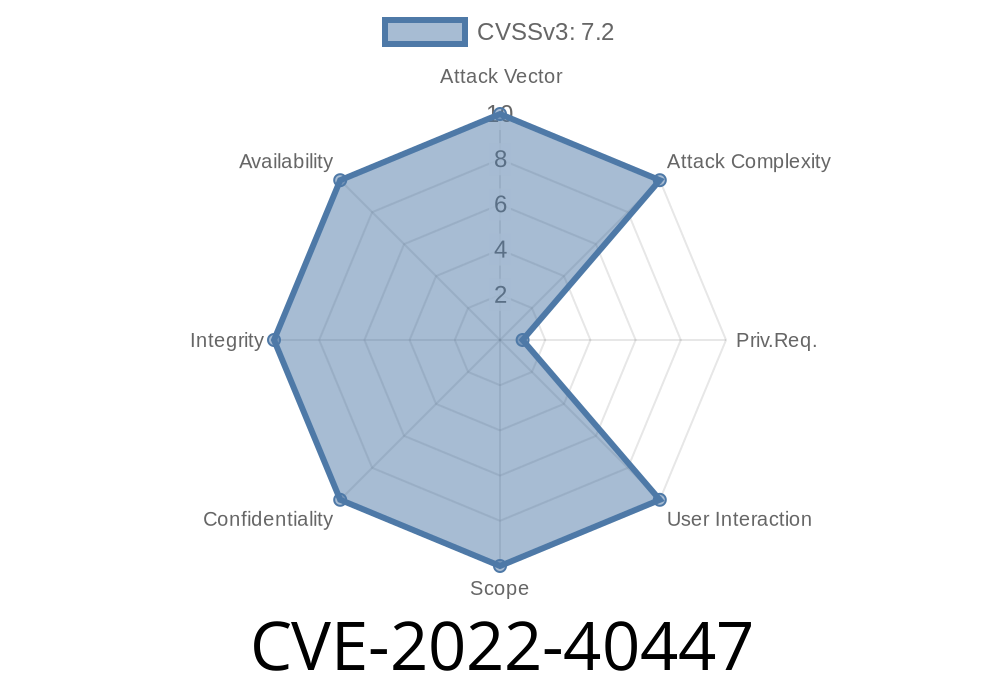A successful attack can cause lost data, access restrictions, and/or external malware infections. The keyword parameter at /admin/baojia_list.php is prone to SQL injection attacks, allowing malicious code to be injected into the application’s database. In order to exploit this vulnerability an attacker would first have to submit a specially crafted request to the targeted application. These requests can be sent via email, or over a maliciously created website. Once contact is established with the application, an attacker can send a request with a SQL injection. In order to exploit the vulnerability successfully, the request must be sent to the /admin/baojia_list.php location. If a user is logged in, the request must be sent from the location of the admin login. This can be achieved by injecting the following code into the request payload: GET /admin/baojia_list.php?keyword=[SQL INJECTION POINT] An attacker can also send a request to the application with an invalid keyword. If an invalid keyword is sent to the application, a SQL error will be generated.
SQL Injection Attack
SQL injection is a type of attack that occurs when an application sends SQL query commands to the database without proper validation. These queries are then run by the database, allowing attackers to retrieve and manipulate data. In this particular attack, an attacker would send a request with a maliciously crafted value for the keyword parameter to the /admin/baojia_list.php location in order to exploit the vulnerability. It would be possible for an attacker to send an invalid value for this parameter in order to trigger a SQL error and execute malicious code.
SQL Injection Attacker Success Factors
The success of an SQL injection attack depends on many factors. These include the database size and complexity, the type of database being used, and the availability of data in that database. If these factors can be manipulated by an attacker, then they can alter the success of an attack.
SQL injection vulnerabilities
SQL injection vulnerabilities occur when the input data to a database query is not properly sanitized. This allows an attacker to manipulate the SQL queries that are generated by an application and use them to execute code to access sensitive information or even take control of the application itself. The vulnerabilities can be exploited by an attacker by sending a specially crafted HTTP request to the targeted application or through a website that has been intentionally made vulnerable. The malicious requests can be sent via email, or over a website with malicious code embedded in it.
To exploit this vulnerability, an attacker would first have to send a specially crafted HTTP request which will result in exploitation if it is sent from the location of the admin login page. If no user is logged in, then the attacker would have to send this request from their own location and there must be malicious code included in the HTTP request’s payload for exploitation to take place. In order for these vulnerabilities to be exploited successfully, an attacker would need to inject malicious code into their HTTP requests using one of two methods:
- Using GET /admin/baojia_list.php?keyword=[SQL INJECTION POINT]
- Using GET /admin/baojia_list.php?keyword=invalid[SQL INJECTION POINT]
SQL injection attack
A SQL injection attack is when an attacker uses malicious code to inject unauthorized data into a database. This can lead to loss of information, access restrictions, and external malware infections. If a user is logged in, the request must be sent from the location of the admin login. This can be achieved by injecting the following code into the request payload: GET /admin/baojia_list.php?keyword=[SQL INJECTION POINT] An attacker can also send a request to the application with an invalid keyword. If an invalid keyword is sent to the application, a SQL error will be generated.
SQL Injection Attack Vectors
A successful SQL injection attack can cause lost data, access restrictions, and/or external malware infections.
There are many ways that an attacker can exploit the vulnerability. The most common vectors include:
1) Sending an email with a maliciously crafted link to the targeted application
2) Creating a website with malicious code embedded in it
3) Exploiting the vulnerability through social engineering
4) By using botnets
Timeline
Published on: 09/22/2022 14:15:00 UTC
Last modified on: 09/22/2022 20:30:00 UTC
